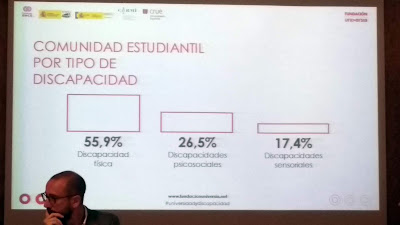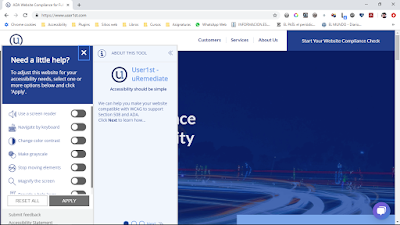Una noticia muy importante, La ONCE abre sus 60.000 libros digitales a todos los ciegos del mundo:
La ONCE pone a disposición de 285 millones de personas ciegas del mundo su biblioteca digital, compuesta por más de 60.000 volúmenes, en una iniciativa sin parangón internacional, dado que supone la mayor puesta a disposición del mundo de textos accesibles en lengua castellana.Se supone que los libros estarán disponibles en marrakech.once.es, pero ahora mismo solo hay una página con un formulario para iniciar sesión, sin información sobre cómo registrarse.
[...]
España, representada por la ONCE, se convierte así en el primer país europeo que materializa el Tratado de Marrakech y pone a disposición de usuarios y entidades autorizadas de todo el mundo su acervo bibliográfico adaptado y accesible a personas ciegas o con deficiencia visual de todo el mundo. Para ello, la Organización española acaba de poner en marcha una web que permitirá a usuarios de todo el mundo acceder a esta información cumpliendo una serie de requisitos marcados por el citado tratado de Marrakech y por la Organización Mundial de la Propiedad Intelectual (OMPI), que garantizan el correcto uso de los textos disponibles.
Según la Wikipedia, el Tratado de Marrakech:
conocido oficialmente como «Tratado de Marrakech para facilitar el acceso a las obras publicadas a las personas ciegas, con discapacidad visual o con otras dificultades para acceder al texto impreso», es un tratado multilateral impulsado por la Organización Mundial de la Propiedad Intelectual (OMPI), que fue firmado en Marrakech, Marruecos, el 28 de junio de 2013. Este tratado entró en vigor a partir del 30 de septiembre de 2016.
El tratado de Marrakech hace referencia a las excepciones al derecho de autor, que posibilitan la creación de versiones accesibles de obras protegidas, a personas con discapacidades que impliquen dificultades de acceso a la lectura convencional. Este instrumento establece una serie de normas para que los países que forman parte de la Organización Mundial de Propiedad Intelectual (OMPI), ratifiquen el tratado e implementen excepciones en sus legislaciones locales, tanto para la creación como para la importación y exportación de obras en formatos accesibles. Así mismo,los países que hayan ratificado el Tratado tendrán la potestad de intercambiar documentos en formatos accesibles entre ellos.Más información en El Tratado de Marrakech explicado.






















